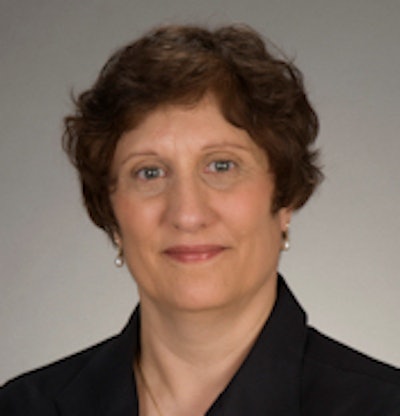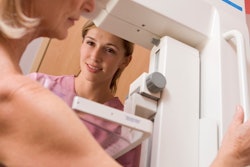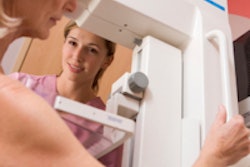
Mammography-detected breast cancer is associated with a shift toward earlier-stage diagnosis in women 75 years and older, subsequently reducing the rate of more advanced, difficult-to-treat cases, according to a new study published online in Radiology.
The study findings address the recent debate over the value of mammography screening in women in this age group, wrote the researchers from the University of Washington. The American Cancer Society (ACS) recommends annual mammograms for women 75 and older as long as they are in good health, but the U.S. Preventive Services Task Force (USPSTF) declared in its 2009 mammography screening recommendation that there is insufficient evidence to determine the benefits and harms of screening mammography in older women.
 Judith Malmgren, PhD, from the University of Washington.
Judith Malmgren, PhD, from the University of Washington.Tell that to an energetic 75-year-old woman, according to lead author Judith Malmgren, PhD, and colleagues. At the age of 75, women have a mean life expectancy of 13 years, and only five years of life expectancy are needed to make mammography screening worthwhile.
What's more, women 75 and older represent one-fifth of the breast cancer incidence in the U.S. -- and almost 40% of breast cancer deaths. Therefore, the study's findings suggest that regular mammography screening for women in this age group is beneficial (Radiology, August 5, 2014).
"More women are living active, healthy lives into considerable old age, and good information on the possible benefits of early breast cancer detection is sorely needed," Malmgren told AuntMinnie.com.
Little research on older women
There has been little, if any, research done on mammography in women ages 75 and older. Malmgren's group sought to rectify this by investigating the effect of breast cancer screening in older women using data from a registry that included 10,935 cases, with 1,162 of those patients being older than 75.
Disease stage ranged from 0 to IV; the data spanned more than two decades, from 1990 to 2011. The researchers also identified whether the cancers had been detected by mammography, a physician, or the patient herself.
Of the patients 75 years and older, 744 (64%) had their malignancies diagnosed via mammography, while 418 (36%) were diagnosed by the patient or her physician. Malmgren's group found a 21% increase in mammographically detected breast cancer over the study period, from 49% in 1990 to 70% in 2011.
Mammographically detected breast cancers were more likely to be stage I (62%), while patient- or physician-detected cancers were more often stage II or III (59%). Patients with invasive breast cancer found on mammography were 31% more likely to be treated with lumpectomy and 28% less likely to undergo mastectomy than patients whose cancer was self-identified or found by their physician, according to the authors.
In addition, mammography detection was associated with significantly better five-year disease-specific survival for invasive breast cancer (97% versus 87% for patient- and physician-detected cancer).
Over the study time frame, Malmgren's group also observed a shift toward lower-stage disease, which is particularly important in older women because they cannot easily tolerate the chemotherapy that is commonly used to treat more advanced breast cancers. And this finding doesn't necessarily suggest overdiagnosis, Malmgren told AuntMinnie.com.
"If overdiagnosis is defined as stage 0 breast cancer, that is, ductal carcinoma in situ, we did not find an unusual or higher rate of mammography-detected stage 0 breast cancer in women age 75 and older," she said. "We did observe an increase in these cancers over time, but this increase was balanced by a decrease in higher-stage disease -- exactly what we would hope to achieve in a screening program."
The researchers acknowledged that the potential harms of mammography, such as false positives, should be considered when weighing screening benefits. But then again, false positives are less common in women 75 and older due to a decrease in breast tissue density, according to Malmgren. Also, the option of less-invasive treatment if cancer is identified early may trump any harm due to false positives.
"When discussing mammography screening with a patient 75 years [or] older, the potential benefits of less-invasive treatment and better survival if breast cancer is discovered with mammography instead of by the patient or her doctor should be added to the conversation," the authors concluded.



















